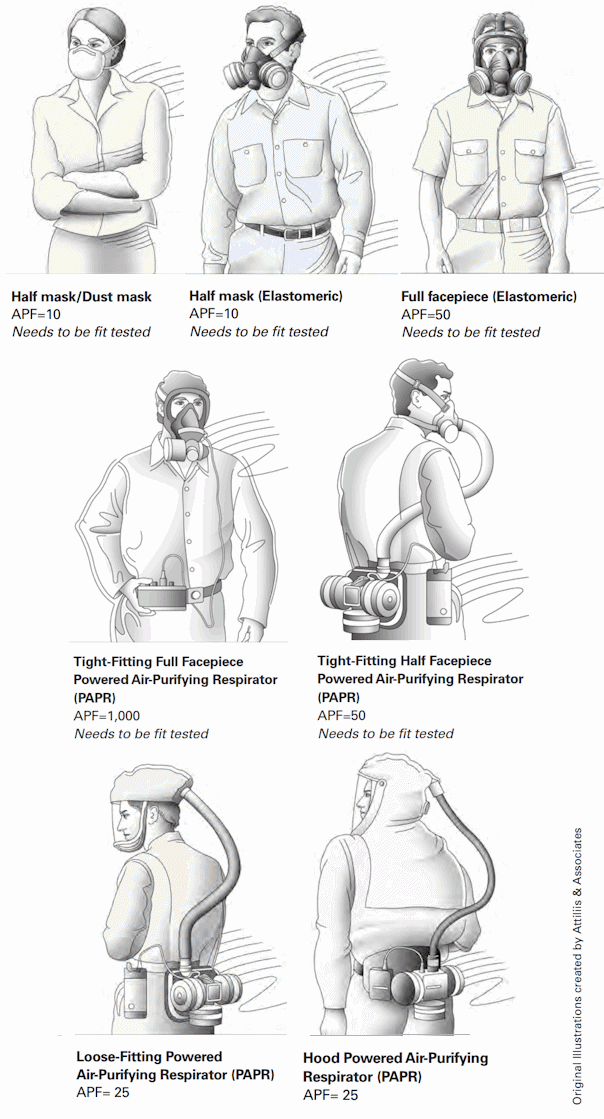Respiratory Protection
Air-Purifying Respirators
The air-purifying respirator, or "APR," has an air-purifying filter, cartridge, or canister that removes specific air contaminants, such as particulates, gases, and vapors, or both from the air.
Selecting an appropriate filter, cartridge, or canister can be complicated because there are many types, and none protect against all contaminants. That is why it is necessary to identify each respiratory hazard in your workplace before you select a respirator.
Air-purifying respirators are available in non-powered and powered types:
Non-Powered Air-Purifying Respirator (APR): APRs are designed to protect the wearer from airborne pollutants and contaminants. These devices do not use a motorized system to deliver air but rely on the user’s breathing to pull air through the filter. Consequently, the breathing tends to be a little more labored. The three basic types are:
- Half-mask particulate respirators: Often referred to as dust masks, these respirators filter out dust, particles, and allergens from the air as the user inhales.
- Half-mask (Elastomeric) respirators: Cover the nose and mouth, and are used with filters or cartridges to protect against gases, vapors, and particulate hazards.
- Full-facepiece (Elastomeric) respirators: Cover the entire face and provide protection against gases, vapors, and particles by sealing more securely against the face, which also protects the eyes.
Powered Air-Purifying Respirator (PAPR): PAPRs have a blower that forces ambient air through one or more filters attached to an inlet covering. The powered type is easier to breathe through than the non-powered type but needs a fully charged battery to work properly. They come in various types, each suited to different environments and protection needs. Here are a few common types:
- Hooded PAPRs: These cover the entire head and neck area, providing a more inclusive barrier.
- Helmet/Visor PAPRs: These have a helmet or visor for head protection combined with respiratory protection, often used in construction or heavy industrial settings.
- Loose-fitting Facepiece PAPRs: These do not require a tight seal around the face, making them suitable for users with facial hair.
- Tight-fitting Full Facepiece PAPRs: These provide a seal around the entire face to protect against gases, vapors, and particulates.
- Tight-fitting Half Mask PAPRs: Similar to full facepiece models but only cover the nose and mouth, allowing for easier use of safety glasses or other eye protection.
- Disposable PAPRs: These are typically for single use and often used in healthcare or emergency settings for quick deployment.
Knowledge Check Choose the best answer for the question.
1-9. Which type of respirator requires more labored breathing?
You forgot to answer the question!

